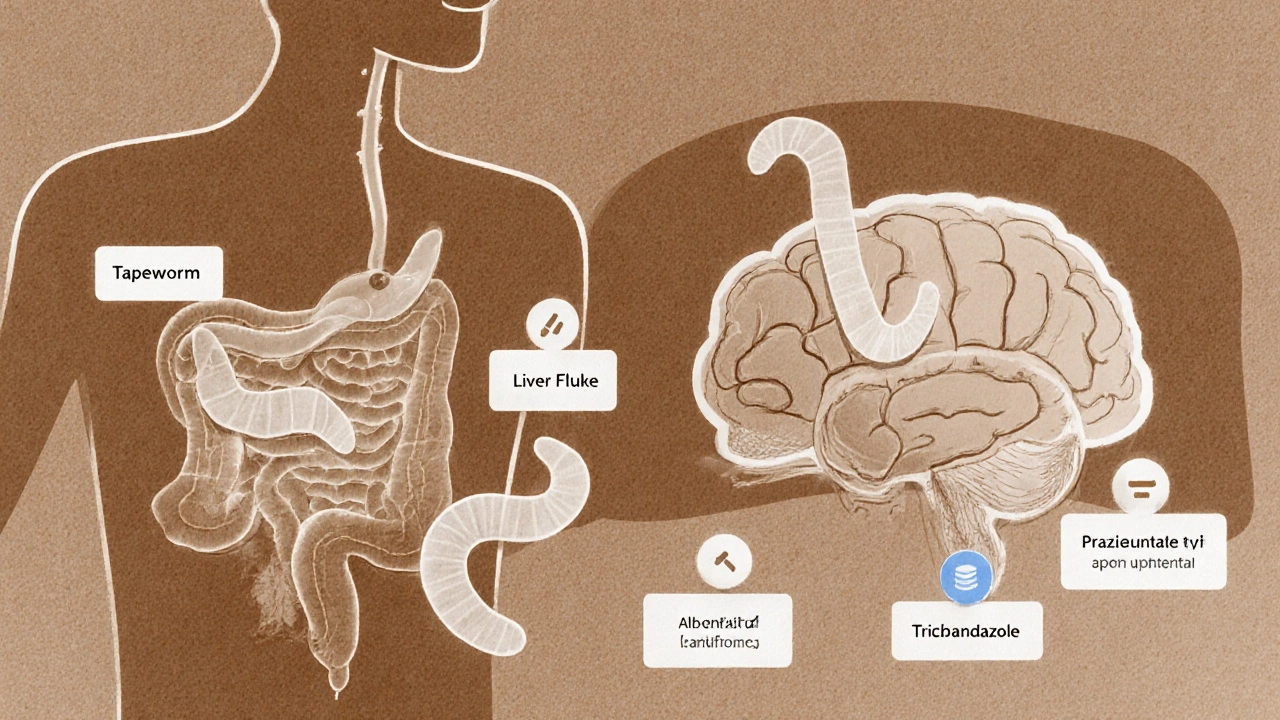Biltricide: What It Is, How It Works, and What You Need to Know
When you hear Biltricide, a brand name for the antiparasitic drug praziquantel, used to treat infections caused by flatworms like schistosomes and tapeworms. Also known as praziquantel, it's one of the most widely used medications for parasitic worm infections worldwide. Unlike antibiotics that target bacteria, Biltricide works on worms—specifically flatworms that live in your blood, liver, or intestines. It’s not a cure-all, but for certain infections, it’s the gold standard.
It’s often prescribed for schistosomiasis, a disease caused by parasitic blood flukes, common in tropical regions and spread through contaminated freshwater. People get infected when they swim or wade in water with infected snails. Biltricide kills the worms inside your body, stopping the damage they cause to your liver, bladder, and intestines. It’s also used for tapeworm infections, including those from eating undercooked pork or fish, which can lead to cysts in muscles or even the brain. The drug paralyzes the worms, making them easy for your body to flush out.
What makes Biltricide stand out is how targeted it is. It doesn’t wreck your gut flora like broad-spectrum antibiotics. It also doesn’t need long courses—often just one or two doses. But it’s not without side effects. Some people feel dizzy, nauseous, or get headaches right after taking it. That’s usually because the dying worms release toxins. It’s not the drug failing—it’s your body cleaning up.
People often wonder if there are alternatives. For schistosomiasis, not really—Biltricide is still the go-to. But for other worms, like roundworms or pinworms, drugs like albendazole or mebendazole are used instead. And while Biltricide is safe for most adults and children over 4, it’s not for everyone. Pregnant women in the first trimester should avoid it unless the risk of infection is high. And if you’ve had a seizure or have liver disease, your doctor needs to know before prescribing it.
What you’ll find in the posts below isn’t just a list of articles—it’s a real-world look at how Biltricide fits into broader health conversations. You’ll see how it compares to other antiparasitic treatments, how drug interactions can affect its use, and why some people misinterpret side effects as allergies. You’ll also find discussions on how parasitic infections are diagnosed, why travel history matters, and how prevention is just as important as treatment. These aren’t theoretical guides—they’re based on actual patient experiences, clinical studies, and practical pharmacy insights.










